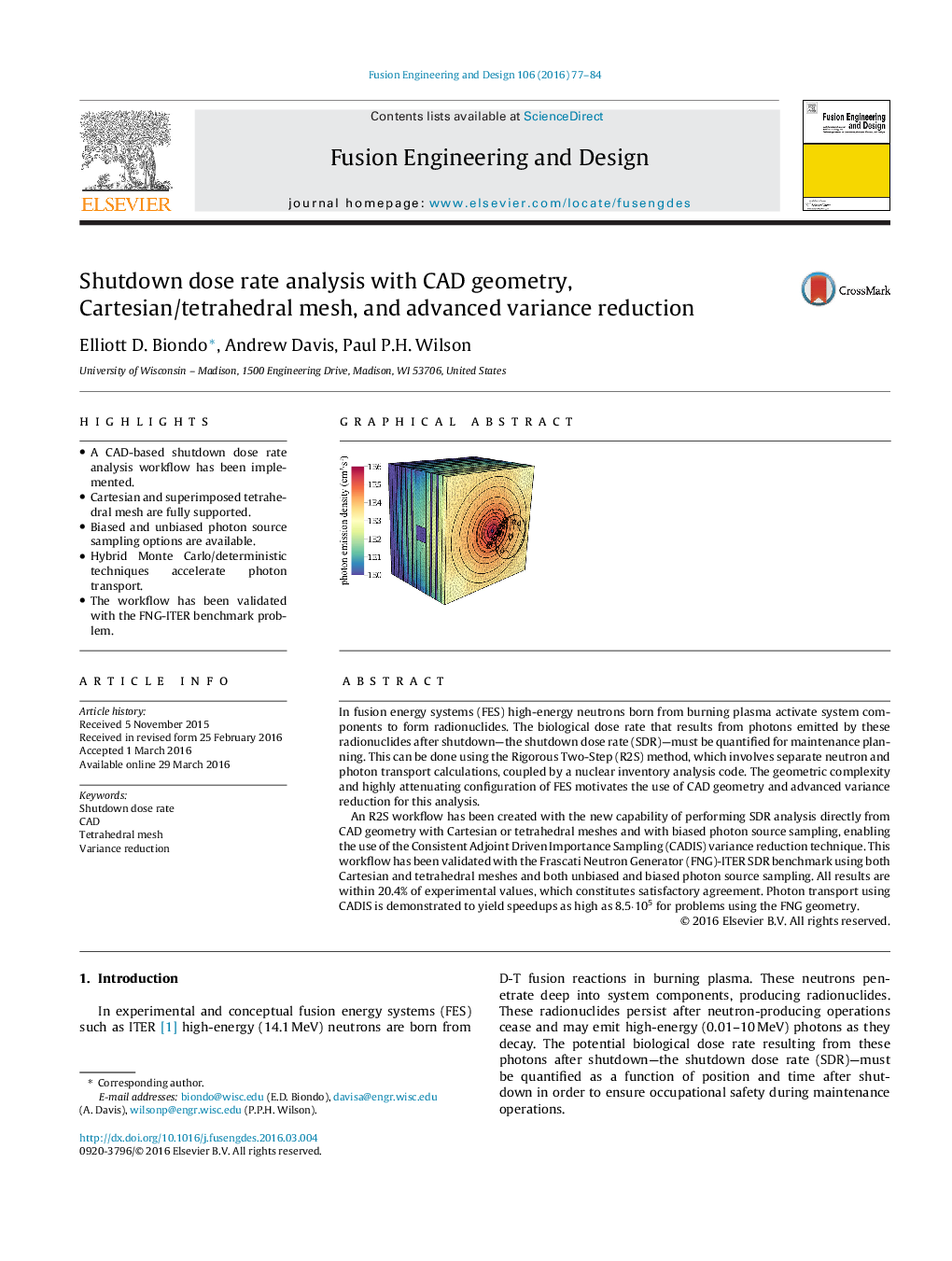| Article ID | Journal | Published Year | Pages | File Type |
|---|---|---|---|---|
| 270898 | Fusion Engineering and Design | 2016 | 8 Pages |
•A CAD-based shutdown dose rate analysis workflow has been implemented.•Cartesian and superimposed tetrahedral mesh are fully supported.•Biased and unbiased photon source sampling options are available.•Hybrid Monte Carlo/deterministic techniques accelerate photon transport.•The workflow has been validated with the FNG-ITER benchmark problem.
In fusion energy systems (FES) high-energy neutrons born from burning plasma activate system components to form radionuclides. The biological dose rate that results from photons emitted by these radionuclides after shutdown—the shutdown dose rate (SDR)—must be quantified for maintenance planning. This can be done using the Rigorous Two-Step (R2S) method, which involves separate neutron and photon transport calculations, coupled by a nuclear inventory analysis code. The geometric complexity and highly attenuating configuration of FES motivates the use of CAD geometry and advanced variance reduction for this analysis.An R2S workflow has been created with the new capability of performing SDR analysis directly from CAD geometry with Cartesian or tetrahedral meshes and with biased photon source sampling, enabling the use of the Consistent Adjoint Driven Importance Sampling (CADIS) variance reduction technique. This workflow has been validated with the Frascati Neutron Generator (FNG)-ITER SDR benchmark using both Cartesian and tetrahedral meshes and both unbiased and biased photon source sampling. All results are within 20.4% of experimental values, which constitutes satisfactory agreement. Photon transport using CADIS is demonstrated to yield speedups as high as 8.5·105 for problems using the FNG geometry.
Graphical abstractFigure optionsDownload full-size imageDownload as PowerPoint slide
